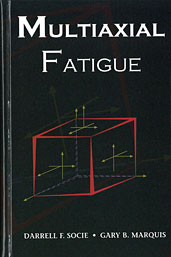Technical Paper
An Evaluation of the Fatigue Performance of Automotive Steels
1971-02-01
710597
A rapid inexpensive evaluation and comparison of the cyclic properties of three steels used in the automotive industry is presented. This evaluation ranges from the endurance limit through the transition life and low cycle regions to the monotonic results. Smooth and notched specimens, tested in strain control and load control, respectively, provide data that are used to indicate notch sensitivity and size effects, cyclic strength and ductility, and cyclic deformation response. The effect of overloads on fatigue damage is given and prestrained smooth specimens demonstrate the possible effect of a few large plastic strain cycles on fatigue resistance. Overloaded notched specimens indicate reductions in life due to both large plastic strain cycles and the induced tensile residual stress. These data are suitable for direct insertion into the design process and also provide a broad base for continuing studies of cyclic behavior.

